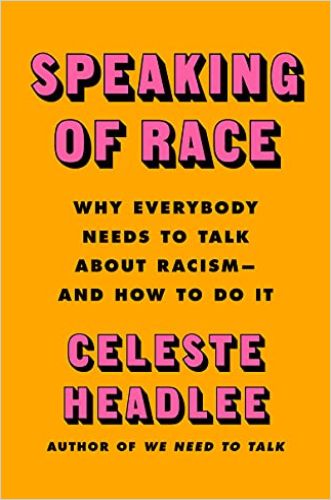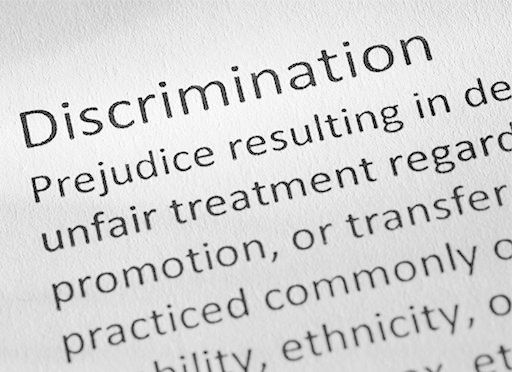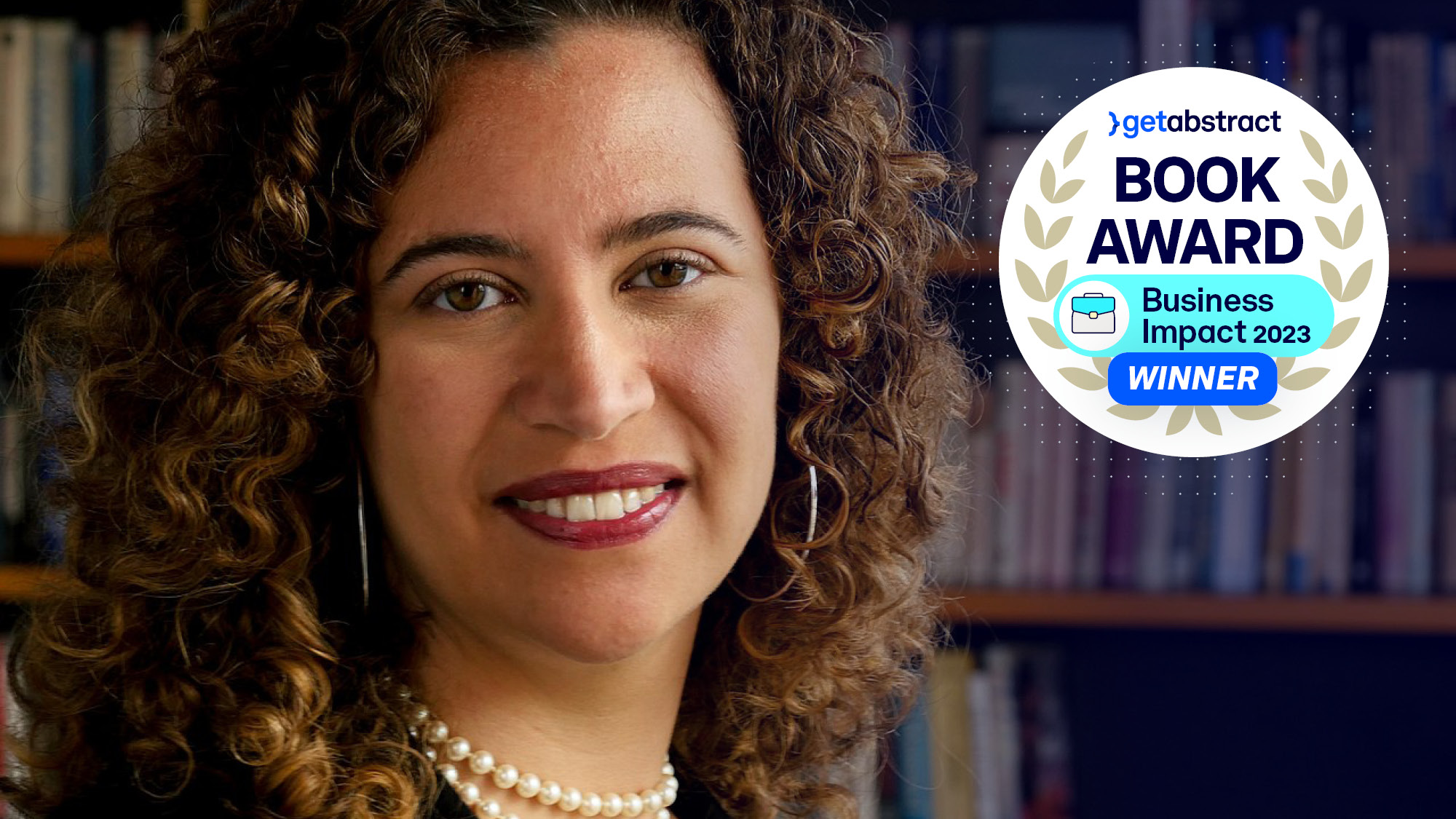“You Can’t Just Tack on DEI Work Like You Add an App to Your Phone.”

In her book, Speaking Of Race, journalist and best-selling author Celeste Headlee recommends ways to approach difficult conversations, including racism. The best way to defuse tensions is to speak openly and often and be willing to learn.
Celeste, the US still struggles with racism and even discussing racism. The idea that racism only exists in the past or that somehow we should be “colorblind” as a society still reverberates with fresh criticisms today of how racism is taught in schools. Is it possible not to see race? Why does any conversation about racism have to start with acknowledging the fact that bias exists?
Celeste Headlee: The conversation has to start there because, like it or not, your brain notices race. It’s among the first things you notice. This isn’t a philosophical question. We know for a fact that your brain takes note of perceived race, and perceived gender in a fraction of a second and that, almost immediately, you begin to decide whether that person is one of us or not one of us. That happens beneath the conscious level, it happens immediately, and it happens very early in a human being’s life. A baby is completely dependent on the people around them for care, which means it is extremely important that that infant knows who is most likely to care for them. This is part of how we have survived. So, the infant brain makes those delineations between part of my tribe and not part of my tribe. These things persist through to adulthood. We have to start there because pretending that’s not true is not helping us.
I guess it’s okay to have a colorblind system as an aspiration. But I would ask people to even question that as a goal because people of color don’t want you to not see their color.
Race in and of itself is imaginary. It’s not real. What somebody who’s a member of a community of color thinks of is not race but culture. And we’re always going to have differences in culture and upbringing and experience. For the most part, we want other people to notice those things and have a curiosity about them and appreciate them and celebrate them. So, I would discard this whole colorblind philosophy from beginning to end. It has no basis in science or biology, and it’s not necessarily productive as a goal.

You illustrate the power of connection and conversation with some great examples of people whose extremist views changed through conversation. What characteristics do these kinds of changes of heart have in common?
Keep in mind that in those examples, we’re talking about people who are in white supremacist groups. Oftentimes those are hate groups. It’s not safe for the average person to approach them. But these examples do teach us something: if change is going to happen, it happens over time, in many cases, years. The other thing is that the changes did not occur because of external persuasion. These were not people who were suddenly convinced by the arguments and the facts and figures of someone else. They weren’t like, “Oh, you’re right. I absolutely should change my mind on this.” In all these cases, it was self-persuasion, meaning that they were exposed to information that caused them to question their own beliefs. It was self-motivated change. This is incredibly important to remember.
In most cases, we come armed with our facts and our figures and we try to beat somebody into the ground with the force of our argument. That will never work.
What might work better?
What does work is to create an environment of psychological safety, an environment in which someone doesn’t feel that changing their mind would be a threat to their own identity; this is quite common to the case studies that I read. The average person believes at heart they’re doing their best and they are good people. So, if your approach is to show them that they are bad and horrible and hateful and racist, their defenses will immediately come up and they will resist you with all their might because that is an existential threat to their identity.
It’s an automatic reaction.
It’s literally a threat. We know this because we can watch using a functional magnetic resonance imaging machine (fMRI) to watch their neurological reaction in real-time. It is the exact same reaction they would have if you were trying to punch them in the face.
(laughs) Wow.
And sadly, that’s the most common approach people have: to somehow prove others are bad and wrong and that they need to change their minds and be different because otherwise they’re bad. That’s never going to work for you.
Take-Aways:
- If you’re human, you have unconscious biases. The more conscious you become of them, the less they influence your decisions.
- All parties to a conversation need to feel safe and respected in order for it to be productive.
- When approaching potentially difficult conversations: be curious, be clear about your goals and be prepared to listen.
I think part of the problem is the anger inspired by so many issues that spark vehement disagreement. Like, for instance, around the pandemic shutdowns and masking. I can understand the toll shutdowns take on a person’s business, but then I get angry that they don’t understand that keeping businesses open could have killed people. It precludes rational conversation.
There will be times on both sides when you’re not in the right mindset for the conversation, and that’s 100% understandable. But you have to remember: those conversations in which one person gets angry and the other person gets defensive? They’re really a waste of your time. And the stress of arguing, that kind of confrontation, where your heart rate increases and you’re pumping cortisol, is not good for you. It’s not productive in terms of changing anybody’s mind, but it’s also not good for you physically, emotionally and neurologically. So, it’s better to learn another way.
So, what’s the better way?
If you use techniques that prevent escalation, if you’re going into these conversations with curiosity, if you set a goal for yourself that’s attainable, then you will not escalate, and you will not get stressed out. Let me give you an example. If someone were to say to me, “Don’t you understand that my business got harmed, etc.” When you have that kind of conversation, one of the first things you need to do is acknowledge what is true. So, instead of making it a “yes, but” argument, acknowledge what is true, like “Yes, you’re correct, and I don’t own a business, so it’s hard for me to understand all that you went through. That must have been so stressful,” because that doesn’t then make the other things untrue.
That makes sense.
And you can make that a point of common ground. Because if some of their beliefs are coming out of damage they have suffered, then sometimes all they need is to be heard. They need to be able to explain what they have gone through. So, give them a moment to do that. It is true that many businesses took it in the teeth and were asked to sacrifice for the greater good. It doesn’t mean you have to conclude, therefore we shouldn’t have mask mandates. That’s when you say, “Listen, you’re right. I can’t imagine how hard this must have been. Mask mandates are a mostly separate issue. And I’d love to talk about that if you want to. Should we talk about that? Because I’m also interested in hearing your experience of what happened with your business.” But you want to make sure you’re not letting them “switch track,” make a correlation into a causation when it’s not the case.
Some people seem to be genuinely unaware that something they say may be heard as offensive or they’re afraid to speak at all for fear of “cancel culture” or being labeled too “woke.” Even the words themselves become minefields, and then conversations become about the words and what they mean instead of the underlying issues. Do you see this happening? Or is that just in the sphere of media and social media that people are sort of using labels to prevent conversations?
I don’t think it’s just in the sphere of media. Social media doesn’t create most of these bad habits; it just amplifies them and allows us to indulge them pretty much without limits. So, do those words become trigger points? Do they become the argument instead of the real argument? Absolutely. That’s another form of switch tracking, meaning somebody says, “Hey, why are you late again?” And you say, “You know, David was late last week. Why don’t we talk about that,” that’s switch tracking. The question at hand is, “Why are you?” As for people not realizing they’ve said offensive things, I would say almost everyone has had that experience. You’re either somebody who has said the wrong thing or will say the wrong thing.
Because most incidents, especially racially offensive ones, are a result of unconscious and implicit bias, most of us are not aware when we say something wrong.
What that means is we should be motivated to make it a not-negative experience for other people to point out our mistakes. In other words, incentivize and make it a pleasant experience for people to tell me when I’ve said something wrong. I want them to tell me because the vast majority of things that I’m saying that are wrong, I’m unaware of. So, we need to create a culture of correction.
What does that look like?
It requires two things: to be able to accept that kind of feedback without defensiveness. And it requires the other person to feel they are in a safe enough place to be able to point it out. In other words, they know you’re not going to turn around and bite their head off or gaslight them and say you didn’t mean it like that, or whatever it may be. So that requires a sort of partnership between them. If somebody points out that you’ve said something wrong, it’s crucial that you say, “Oh my gosh. I didn’t even realize. Thank you for pointing that out. I really appreciate it.” And then, you can move forward with removing whatever that was from your regular vocabulary. Look, the language is going to change all the time. There’s no way everybody can keep up on what is the proper terminology for every single racial category, gender category, etc. Therefore, we want other people to help us. We need their input. So, yes, if somebody says, “Oh, you’re so woke,” you can say, “Yes, you’re absolutely correct. But also, you said this other thing…”
Aha. Okay.
Because they’re not connected. I mean, it’s just silly. It’s just a way for people to avoid talking about the real issue.
Let’s talk about general mindset. What’s a good mindset going into a potentially difficult conversation?
Step one is acknowledge that you are biased. Just a big thing that complicates conversations about any type of difference is the fear of being called racist, sexist, homophobic, whatever it may be. So, get over it. You are biased. I absolutely encourage everybody to take a version of the IAT, Harvard’s Implicit Association test. It’s available online. There are maybe 15 different versions of it. I often suggest people start with the age one because most people, even including seniors, have a bias against older people. For whatever reason, that tends to be less threatening to people’s identity. So start with one that’s a little less emotionally fraught rather than jumping straight into race. Keep in mind that the two most common reactions to results in the IAT are, a) there’s something wrong with the test, or b) I did something wrong while I was taking it and therefore these results are wrong. So, just accept that you are biased. The next thing is to understand that you will not be able to get rid of that bias at all from your brain. It’s going to always live there. But what you can learn to do is prevent yourself from expressing that bias in your decision-making and your logic. Understand and be specific about what your goal is and what you’re trying to accomplish. Finally, understand that these changes and this learning are iterative. It happens over time. This is not going to be like reading some dot com article that says the ten ways the most successful people don’t say offensive things. That’s not how this works. So, buckle up.
This is going to be a daily practice. Make a commitment, because it’s worth it.
Why is curiosity a great attitude to have when you start a conversation?
One of the biggest problems we have – I assume this has always been a problem, but it’s especially true in our modern society – goes by lots of different names in organizational psychology. They call it the “expertise trap” or a “Google bias.” What it means is that we all think we’re experts or at least a few Google clicks away from being experts in every single field.
Ah, yes I recognize this bias.
So, when you are subject to that expertise trap, your learning curve either flattens out or takes a dive. You stop learning because, number one, of course, you’re not an expert in every field.
Curiosity is the quality that allows us to retain what Buddhists call ‘beginner’s mind.’ There are so many fields in which you’re a beginner. Embrace it.
When you’re first learning something new, it is an exciting time. It can be mind-blowing. If you’re shutting yourself off from that, you’re really missing out. Curiosity is not only healthy for you, it’s the way to jumpstart your learning curve and begin actually getting new information. It helps you. Bring curiosity to bear, an honest curiosity that wonders, how does this work? What does that mean? What’s the next step? Where do we go from here? That’s not only good for diversity and inclusion and equity and all these other things. It’s just good for you.
You’ve laid out a few foundations for respectful conversation, for instance, a space of psychological safety. What are some other necessary steps for respectful conversations?
Just remember that respect for a person is not necessarily respect for an opinion. You can absolutely have the most contemptuous opinion whatsoever of someone’s opinion and still show respect to the person. And of course, I am always talking about conversations in which abuse is not present.
We used to teach rhetoric in schools, and rhetoric is the study of learning honest discourse. One of the core concepts of rhetoric is this idea of intellectual honesty, meaning that the ideas you are arguing in favor of or against are honestly your own opinions, that you truly believe them. You’re not lying or spinning or trying to win an argument. You’re trying to have one.
This idea of respect goes back centuries and centuries. It is how we have gotten along and how we’ve moved knowledge forward. So forget this idea that agreement is necessary.
You don’t even have to like the person because here’s the other thing that we need to be at all times: kind. Remember, there’s a massive difference between niceness and kindness. Niceness is generally about appearances. We’re talking about seeming nice to others, doing things that appear nice. If a rude thing is said to somebody during a meeting, the nice person will find them afterward and say, “I’m so sorry. I hope you’re okay.” The kind person intervenes in the moment. A kind person is the one that actually does what they think is needed. And so there’s a difference between kindness and niceness. And what I want people to practice is kindness. Kindness doesn’t require you to like anybody. It just requires that you be a kind person.
What’s a way you would suggest to intervene in a moment where someone says something that’s racist or otherwise offensive, but they don’t believe it or they don’t realize that it is?
I teach the STAR method, which is Stop, Tell, Assist, Restore. The STAR method should take you maybe 30 seconds. The STAR method is designed for you to use in the moment, immediately. In fact, you should even use it to interrupt whatever’s being said and hopefully prevent them from finishing the thought. If you can get in there that quickly, you can stop them using whatever language you want to flag. You can say, “Whoa, hold on. Hey.” One of the most effective things to say is, “What did you say?” Sometimes, then, you don’t even need the rest of the TAR because when people repeat what they said, they hear themselves and realize they’ve said something wrong. But, in the first step, you’re just going to Stop them. And then you’re going to Tell them what’s wrong here. And you are always going to speak for yourself and nobody else. You’re going to say, “Hey, what you just said sounded offensive to me. Hey, what you just said is not the language I like to hear here.”
The Assist part is where you’re helping them. And I really want people to think of this as helping them the way they would want to be helped if they’d said the wrong thing, to understand why what was said was offensive or inappropriate. So, “Hold on. What you just said bothered me. I’m going to assist you by saying, you know, you may have thought you were telling a joke, but you’re feeding into a stereotype which ends up being really damaging for women in business situations” or whatever. And the last thing you’re going to do is Restore them. You’re going to restore them as a human being. This is the most important step, yet it’s the one people have the most problem with. You give them the benefit of the doubt. In other words, you’re lowering that threat response by saying, “Look, I know you don’t want to upset people. You’re not trying to hurt anybody.”
“This is not your intention.”
Right. So, “I just wanted to point it out. Okay. Continue.” And that whole process takes less than a minute and then you continue on with the meeting or whatever it is you were doing.
Training videos are not effective. Asking people to process painful experiences publicly is also not effective because it can make people feel worse and rarely leads to healing. So how can companies improve their diversity training and just better walk the walk?
This is a question that has occupied me for the past three years now. I actually ended up creating a nonprofit, along with other colleagues in the public media space, in which we spent years figuring out what works when it comes to DEI training and created an entirely new strategy for training people. There are a couple of things: One of the foundational things that we do is train people themselves to be facilitators. Don’t worry about bringing in consultants right now. The better thing to do is actually make as many people as possible on your team trained to intervene because you’re trying to break a cultural norm.
You’re trying to create a new culture. And that’s going to take time and it has to be a daily effort.
So, bringing in a consultant who’s going to come in, do their work and then leave is probably not going to be helpful to you. We literally invite everybody to come in and train in how to be a facilitator in this space, how to guide these conversations, how to respond when something is said. Then that person becomes a data point who’s going to be nudging that needle every single day that they’re within that organization.
And the other part of this is that you have to get leadership in there. We just had a course in which we had a lot of lower-level managers from a large, large company. And at one point, one of the team members said, “You know, our leadership is 100% white. Why is there no executive here?” And it’s a great question. Those most empowered to make change and have an impact and model correct behavior are the executive team. Frankly, when I run these courses in training people how to be a facilitator, the ideal would be to see it completely filled with the C-suite. That’s who needs to be there.
And the final thing I would say is that you have to stop creating performative DEI committees. It is the most common thing for people to set up DEI committees. They’re often voluntary, and the work generally falls on women and on people of color, and then they give them no power whatsoever, meaning they spend all this time making these recommendations. They’re thanked for it. Maybe they get some free pizza, but the effort makes no change whatsoever. If you are serious about making change in your workplace, then those committees have to actually have power to make changes and have a vote in decisions that are made.
This comes back around to the C-suite: meetings should be carved out in people’s work schedules and include upper management.
Yes. The idea is that you can’t just tack on DEI work like you add an app to your phone. For DEI work to actually be successful, to be measurable in its success, it’s going to be uncomfortable. It’s not going to be something that you can do for 15 minutes a month, hear the report of your DEI committee and then get back to what you normally do. What you normally do is the problem.
About the Author:
Celeste Headlee is an internationally recognized journalist and author of Speaking of Race: Why Everyone Needs to Talk About Racism and How to Do It. Find out more at CelesteHeadlee.com.
Explore more work by this author:









